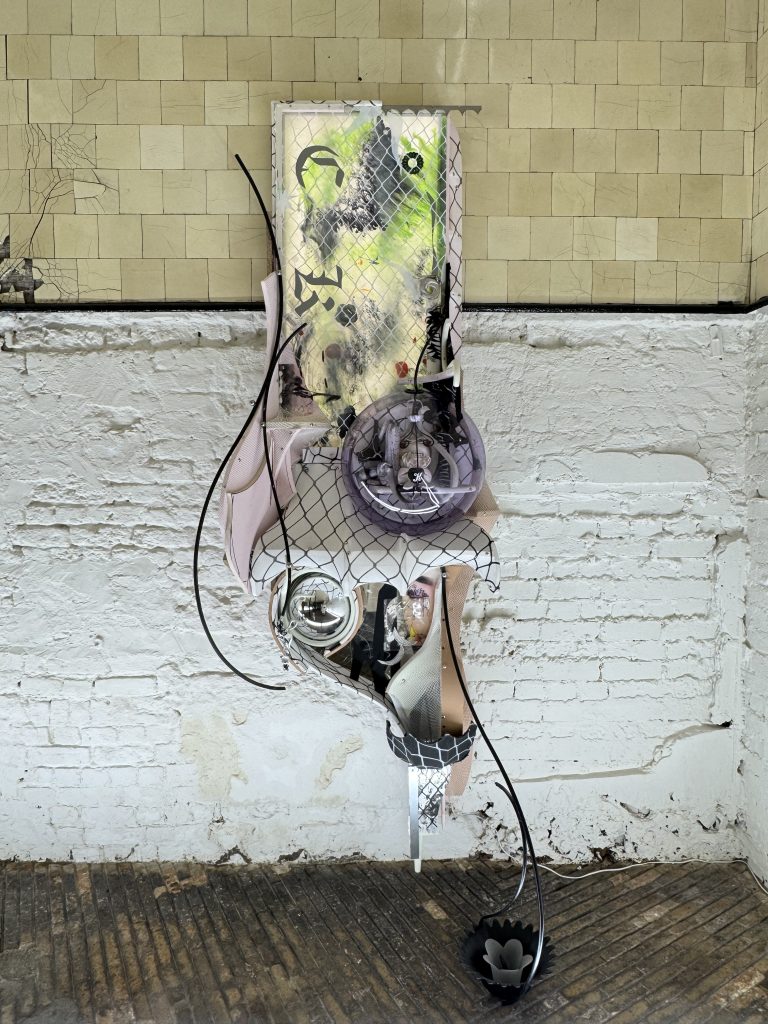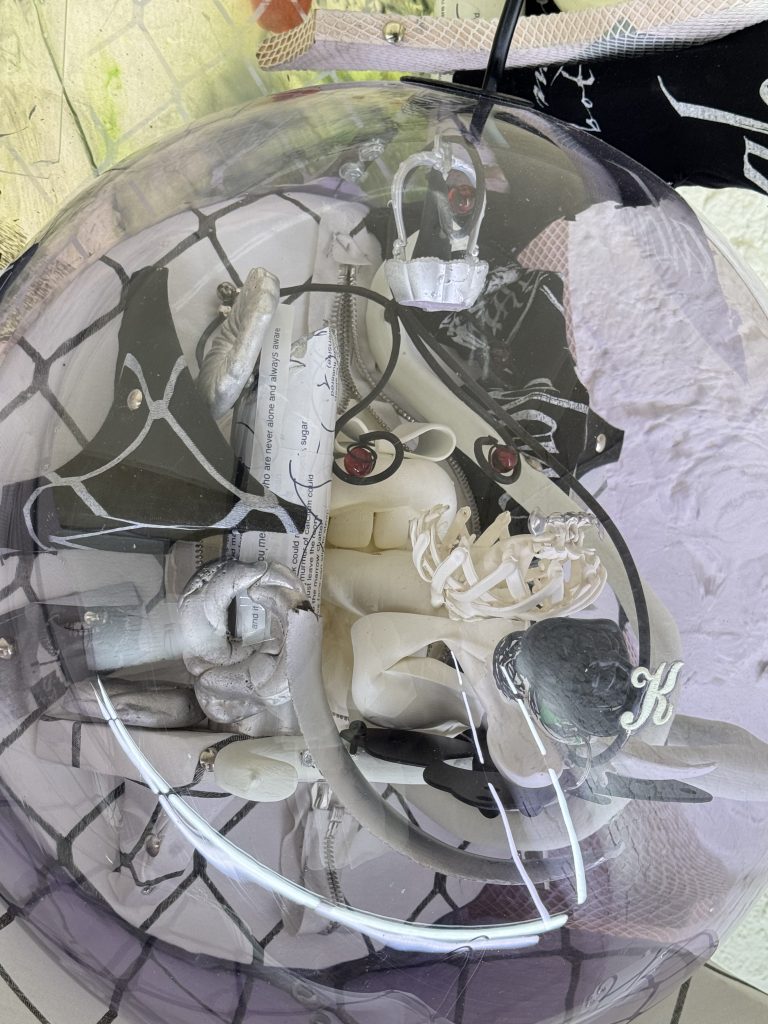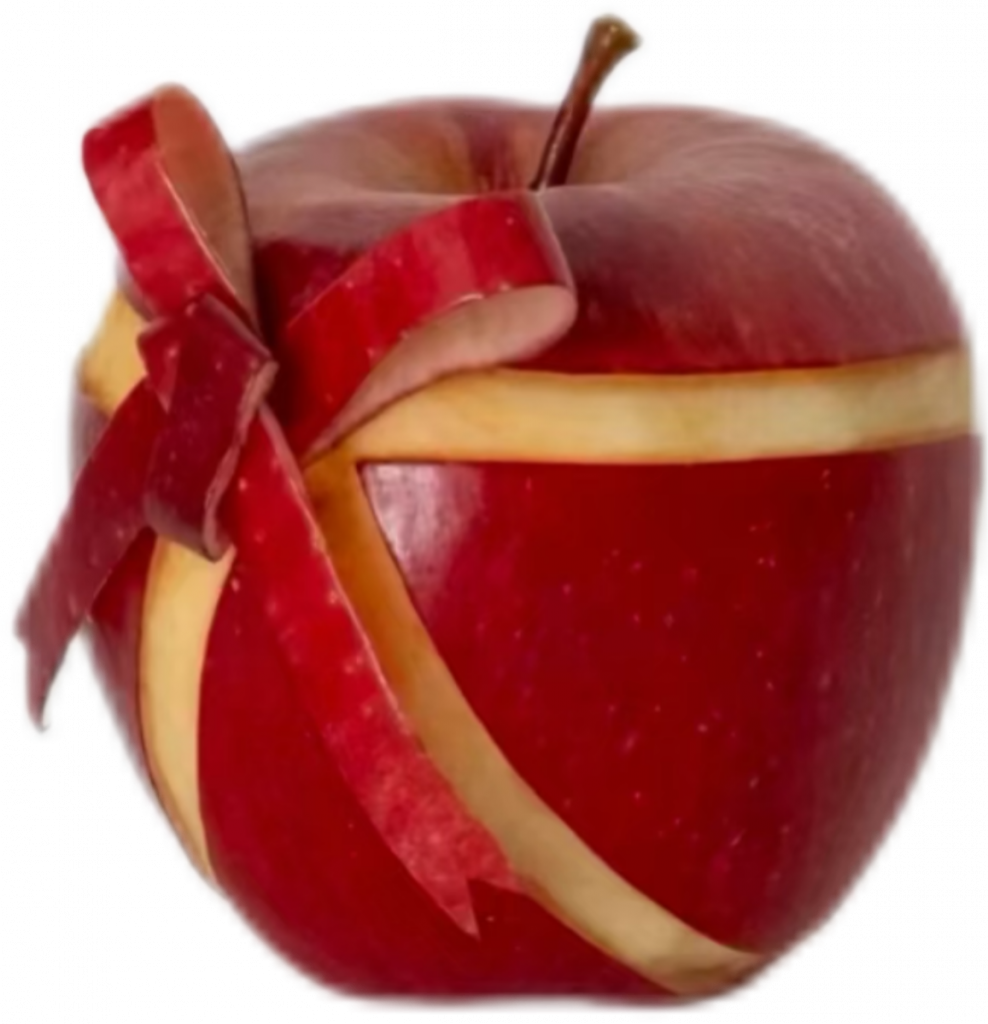

In my spare moments, I often visit exhibitions. Not with the intention of writing about every one of them, but simply to see what stays with me. Some shows leave a lasting impression that I want to put into words.
In January, I visited David Douard’s solo exhibition EVE’RGREEN D’AZED at Sylvia Kouvali Gallery, and his sculptural works immediately struck me with their poetry and elegance. There was a sense of sensorialism woven into his pieces, an intricate layering of small images, and tiny objects.
Each fragment seemed to act as a character in his artistic language, combining to form a kind of visual poetry. Some elements carried symbolic meaning, while others spoke through their raw, material presence. The density of information embedded within these small assemblies revealed that language (in both its structured and chaotic forms) stands at the core of Douard’s practice.
Witnessing this approach brought me back to a project I developed during my second year, where I attempted to capture the emotional charge of poetry and translate it into a physical, multisensory installation. The idea was to create a space where emotions could be ‘read’ through textures and visual elements-a kind of sensory translation of poetic energy.
At the time, I faced two major challenges:
Material Constraints: The fabrication of complex materials was extremely time-consuming
Overemphasis on Wholeness: I became too focused on achieving a perfect, cohesive final piece, chasing a perfect final piece ended up taking away the raw energy I first wanted.
Seeing Douard’s work has offered me a fresh perspective on these challenges. His installations embrace fragmentation and multiplicity, yet maintain an underlying coherence through rhythm, repetition, and sensorial connection. Wholeness doesn’t have to mean seamlessness; it can arise from carefully arranging disparate parts
Moving forward into my third year, I plan to dive deeper into this idea. I aim to research artists like Douard, examining how they structure installations as living, breathing languages rather than static objects. I also want to experiment more bravely with process-driven making and allowing the work to grow organically.

Leave a Reply